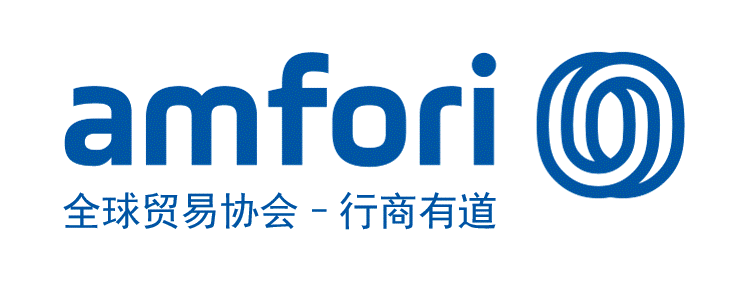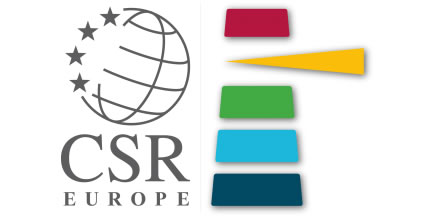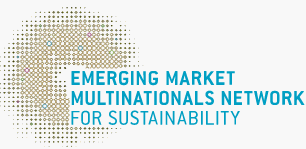SASAC establishes the Bureau of Social Responsibility
2022-05-05GoldenBee责任编辑0
On March 16, the State-owned Assets Supervision and Administration Commission of the State Council (SASAC) announced the establishment of the Bureau of Sci-Tech Innovation and the Bureau of Social Responsibility, and the inaugural meeting has been held recently. The newly established Social Responsibility Bureau has become the first full-time unit established by the central government at the ministerial level to be responsible for social responsibility.
The SASAC pointed out that the establishment of these two bureaus will better organize and guide state-owned enterprises (SOEs) directly under the central government (referred to as CSOEs hereafter) to deeply implement the innovation-driven development strategy, actively fulfill corporate social responsibilities (CSR), become stronger and better state-owned capital unswervingly, and accelerate the pace to be world-class enterprises.
Looking back at the CSR development in China, SASAC's promotion of CSR for CSOEs is obvious to all. SASAC has attached great importance to CSR since its establishment, and kept promoting CSOEs to fulfill their social responsibility. Through a series of measures such as doing theoretical research, issuing CSR policies, formulating development strategies, promoting management, making summary and evaluation, strengthening information disclosure, carrying out international exchanges, and creating social atmosphere, the CSR progress are remarkable. The establishment of the Bureau of Social Responsibility will not only help better smooth the relationship between efficiency and fairness, guide and promote CSOEs’ CSR development to a higher level with increased competitiveness and sustainability, but also become a landmark event for the Chinese government to promote CSR and further improve the "five-in-one" CSR model in China.
Q
How to understand the establishment of the Social Responsibility Bureau?
Many scholars have interpreted it from the aspects of strengthening the competitiveness, innovation, control, influence and anti-risk ability of CSOEs under realistic conditions, and believe that it is an important measure to help CSOEs become world-class enterprises. However, if looking back at the history of the SASAC's CSR efforts, it is evident that the establishment of the Bureau of Social Responsibility has a clear historical context and a realistic inevitability.
With the promotion of the SASAC, the CSR management and practices of CSOEs has made great progress in "quality" and "quantity" in the past decade, and has made a lot of theoretical innovations and practical preparations for better CSR fulfillment in the new era.
The release of the SASAC No. 1 Document in 2008, Guidelines to the Central State-owned Enterprises Directly under the Central Government on Fulfilling Corporate Social Responsibilities (and related research on No. 1 Document in 2007) was promoted by Bureau of Comprehensive Research. In 2016, the SASAC carried out institutional reform, and the CSR work was taken over by the Comprehensive Bureau, which had a social responsibility office responsible for promoting CSR among CSOEs. In 2019, the Comprehensive Bureau was adjusted to the "Bureau of Sci-Tech Innovation and Social Responsibility", which was also the first time that social responsibility appears at the ministries and commissions of the central government. In March 2022, the Social Responsibility Bureau was announced to be established.
The SASAC has successively issued the Guidelines to the Central State-owned Enterprises Directly under the Central Government on Fulfilling Corporate Social Responsibilities, the Outline for the Implementation of the Harmonious Development Strategy During the Twelfth Five-Year Plan Period of Central State-owned Enterprises, the Guiding Opinions on the Management Improvement Activities of Central State-owned Enterprises, and the Guidelines to the State-owned Enterprises on Better Fulfilling Corporate Social Responsibilities.
Under the guidance and promotion of these documents, the CSOEs’ CSR work has also entered the three stages including introduction (2008~2010), management improvement (2011~2015), and advancement (2016 to present). CSOEs have handed over eye-catching report in serving the national economy and people's livelihood, promoting regional development, undertaking urgent, difficult, dangerous and heavy tasks, facilitating ecological civilization, helping poverty alleviation, and building the Belt and Road Initiative, highlighting the responsibility and the spirit of sustainable pioneers.
However, compared with many world-class enterprises, CSOEs are still weak in "shaping sustainable brands", "building core competitiveness", "coordinating efficiency and fairness", etc. These issues also became the focus of discussion at the 24th meeting of the Central Committee for Comprehensively Deepening Reform held on February 28. The Guiding Opinions on Accelerating the Building of World-Class Enterprises deliberated and adopted at this meeting, with the core idea of "accelerating the building of a number of world-class enterprises with excellent products, outstanding brands, leading innovation and modern governance", not only put forward new requirements for the SASAC to promote CSR, but also provide a new direction for CSR development of CSOEs. Judging from the comprehensive historical review and practical requirements, the establishment of two bureaus by the SASAC drives quality and efficiency with innovation, and promotes fairness and progress with CSR fulfillment. It is not only an affirmation of CSR fulfillment by CSOEs, but also a system innovation to solve the constraints of becoming "world-class enterprises".

Q
How did SASAC promote CSR before the establishment of the Bureau of Social Responsibility?
The establishment of the Bureau of Social Responsibility has attracted attention to the CSR practices and development by CSOEs. Meanwhile, people have begun to re-understand the role and significance of SASAC in CSR promotion.
In recent years, China's CSR development has made great progress. As a leading facilitator of the five-in-one CSR model in China, the relevant ministries and commissions of the central government have worked on top-level design and system, formulated laws and regulations, improved relevant policies, incentive and constraint mechanisms, and guided enterprises, industries and local governments to carry out policy formulation and situation analysis, so as to achieve overall CSR promotion and system optimization. Among these efforts, the SASAC is the representative of "promoting CSR development with government guidance". Over the past ten years, the SASAC has combined its own functions to continuously guide CSOEs into the fast lane of CSR fulfillment from the aspects of theoretical research, policy introduction, incentive mechanisms, and social atmosphere.
It mainly includes the following 8 aspects:
1. Carrying out theoretical research
Since 2006, the Bureau of Comprehensive Research of SASAC has begun to preside over CSR research of CSOEs, starting from the definition by clarifying the basic meaning of CSR for CSOEs, and studying the foreign CSR development and trend from theoretical research, legal provisions and practices. The theoretical, forward-looking and systematic research topics have laid a foundation for promoting the CSRof CSOEs. In recent years, many CSOEs have actively strengthened the CSR theory and CSR top-level design, and continuously promoted management and practices with theoretical innovation.
2. Publishing policy document
In January 2008, the SASAC issued the No. 1 Document Guidelines to the Central State-owned Enterprises Directly under the Central Government on Fulfilling Corporate Social Responsibilities, requiring CSOEs to focus on eight aspects of social responsibility. According to the characteristics of the industry and enterprise, each CSOE has different CSR priorities. In accordance with the eight aspects, the CSOEs implement various measures to carry out CSR work in a standardized and orderly manner based on the actual situation. Since then, the SASAC has issued a series of relevant documents, especially the Guiding Opinions on Promoting the High-quality Development of CSOEs to Achieve Carbon Peak and Carbon Neutrality issued last year. It continuously guides and promotes CSOEs to enhance the CSR awareness, improve CSR management, and innovate in carbon reduction as well as CSR practices.
3. Formulating development strategies
In September 2011, the SASAC issued the Outline for the Implementation of Harmonious Development Strategy of Central State-Owned Enterprises During the 12th Five-Year Plan Period, marking that the CSR of CSOEs has been elevated to the development strategy. For CSOEs, understanding CSR from the strategic level can help explore the path of harmonious development strategy with their own characteristics based on them combine corporate development and characteristics of the industry, so as to continuously promote CSR work and comprehensively achieve its objectives.
4. Carrying out management promotion activities
In March 2012, the SASAC carried out a three-year activity to improve the management of CSOEs, and CSR management was included in it. Promoting CSR management has become a part of enterprise management. In the promotion activities, many CSOEs have strengthened the benchmark with leading domestic and international enterprises. Some enterprises organized mutual learning and research, and some carried out exchanges with provincial state-owned enterprises, foreign-funded enterprises, private enterprises, etc., effectively improving the ability and level of CSR management.
5. Carrying out summary and selection event
SASAC holds the CSR working conference every year to summarize and exchange the effectiveness and experience of CSR implementation, study and plan the next step of the CSOEs’ CSR development. Every year, the CSR practices will be evaluated by experts according to the CSR cases provided by CSOEs, and the annual "Excellent Social Responsibility Practices of Central SOEs" will be selected.
6. Strengthening the information disclosure
Recommending CSR reports and excellent CSR practices became key tasks of the SASAC in recent years. In 2009, the SASAC put forward a requirement that by the end of 2012, all CSOEs should publish CSR reports. The SASAC regards the reports as an important tool for enterprises to strengthen communication with stakeholders, and an effective means to enhance the ability and level of CSR fulfillment.
7. Launching international exchange and cooperation
SASAC has conducted research, training, forums and other exchange activities with the Embassy of Sweden in Beijing, the Sino-German CSR Project, the Global Reporting Initiative(GRI) and other international programs or organizations.
8. Creating CSR atmosphere
The SASAC supports industry associations and relevant institutions to promote CSR development, and introduces the CSR fulfillment of CSOEs in activities such as the social responsibility high-level forum and the International CSR Forum in China, creating a good CSR atmosphere.
Q
After the establishment of the Bureau of Social Responsibility, what changes will be made to CSR development?
CSR is a systematic management involving the full coverage of staff and process. After years of theoretical exploration and innovative practice, many enterprises have formed a CSR mode that is in line with their own development practice, industry characteristics and core business. The impact of the establishment of the Bureau of Social Responsibility and how the enterprise will respond to this change have become the focus of widespread attention.
According to the website of the SASAC, the Bureau is composed of five offices: general office, social responsibility office, safety emergency office, environmental protection and low-carbon office, and assistance work office. The main responsibilities of the Bureau include, researching and proposing policy and suggestions for promoting the CSR fulfillment of SOEs, guiding supervised enterprises to fulfill CSR, supervising and guiding enterprises in work safety and emergency management, quality management and brand building, energy conservation and ecological environmental protection, rural vitalization and aid in Xinjiang, Tibet and Qinghai, guiding and promoting the supervised enterprises to achieve carbon peak and carbon neutrality. The work requirements that many people care about have also been explained at the inaugural meeting of the SASAC Bureau of Sci-Tech Innovation and Bureau of Social Responsibility, namely,
1. To ensure the implementation of CSOEs to achieve carbon peak and carbon neutrality (30· 60 Decarbonization Goal), and promote the decarbonization development through the targeted policy for each enterprise.
2. To ensure safety and environmental protection, and encourage enterprises to improve risk prevention and control systems throughout the whole process.
3. To help CSOEs in rural vitalization and aid in Xinjiang, Tibet and Qinghai.
4. To improve quality management and brand building of CSOEs to create a number of internationally renowned high-end brands.
5. To build a CSR system for CSOEs, guide and encourage them to actively implement the ESG concept, actively adapt to and lead the formulation of international rules and standards, to better promote the sustainable development.
Five abovementioned important tasks, in fact, are the main issues and directions of CSR development and fulfillment. Many pioneer enterprises in CSR have even made samples with achievements, experience and models explored in these aspects.
For example, rural vitalization has become a major task for many CSOEs in the past two years. While summing up their experience in targeted poverty alleviation, many CSOEs have also actively launched new actions and projects for rural vitalization. To help promote the realization of the 30· 60 Decarbonization Goal, many CSOEs have also released their own carbon neutrality action plans, announcing a series of emission reduction measures decomposed into all aspects of production and operation.

If the Bureau of Social Responsibility has included rural vitalization and the 30· 60 Decarbonization Goal into key tasks to further strengthen its key areas of CSR fulfillment, then it is more like an order for enterprises to practice ESG concept and build high-end brands.
The importance and urgency of these tasks can be reflected through data. In recent years, ESG has gradually become an international trend. With more and more multinational enterprises integrating ESG into their development strategies and releasing ESG reports, ESG has become a part of world-class enterprises.
For CSOEs aiming at “building world-class enterprises”, to improve sustainable long-term values through practicing ESG concepts and releasing ESG reports has become an important part of their CSR fulfillment and an integral step for global competition.
The same intention is also reflected in the brand building. At present, the internal and external environment of China's development is undergoing profound changes. The reconstruction of the global industrial chain and value chain has entered a critical period, and the role of brands in international competition is becoming increasingly prominent. In recent years, although more and more Chinese enterprises have been listed among Fortune Global 500, compared with many world-class enterprises, they still appear to be “big but not strong” and “complete but not excellent”. The lack of brand influence and competitiveness would be considered as a major reason.
From this point of view, although bearing great responsibilities and arduous tasks, CSOEs need to be more oriented, confident and powerful than ever before in building a strong brand. The sustainable brands will not only become an important resource for Chinese enterprises to participate in global competition, but also a rare opportunity for them to overtake others in CSR fulfillment.
After the establishment of the Bureau of Social Responsibility, what changes will be made to CSR development?
Best Practices
- The 100-year brand — Air Liquide also has a sense of juvenile
- Beijing Public Transportation Corporation: Developing green transportation to build a harmonious and livable capital
- CGN: Building a modern factory in barren deserts and developing a new win-win cooperation model along “Belt and Road”
Upcoming Event

All the materials on the site “Source: XXX (not from this site)” have been reprinted from other media. They do not imply the agreement by the site.
All the materials with “Source: CSR-China Website” are the copyright of CSR-China Website. None of them may be used in any form or by any means without permission from CSR-China Website.
GoldenBee Official WeChat
Copyright © Csr-china.net All Right Reserved.
京ICP备19010813号










